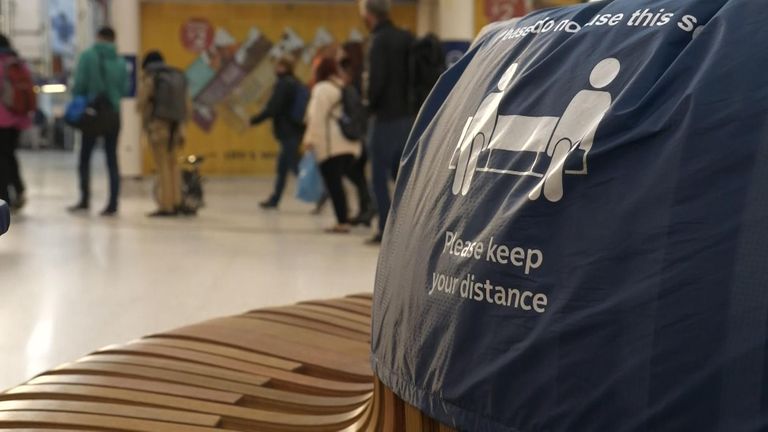Leeds, Middlesbrough, Corby, Kettering and South Tyneside have been added to the government’s coronavirus watchlist after cases spiked.
Norfolk, Rossendale in Lancashire and Northampton will also become “areas of enhanced support”, which means more residents will get access to testing, after seeing their own rises in COVID-19 infections.
Some areas previously subject to local lockdown restrictions, including Leicester, parts of Greater Manchester, West Yorkshire and Lancashire, will see them relaxed next week.
Newark and Sherwood, Slough and Wakefield will be removed from the watchlist, the Department of Health and Social Care (DHSC) added.
In Leeds, the coronavirus case rate is now 32.4 per 100,000 people, with council bosses blaming young people for spreading the virus to different parts of the city.
The council said COVID-19 is “increasingly detected in younger people aged 18-34, with some concern over activities like house parties and gatherings”.
Andrew Carter, a local councillor who heads the Conservative group, told Sky News the change was “quite right” as there has been a “whiff of complacency”.
He complained parts of the city have been “left without much testing locally at all” – with one drive-through centre running “way below capacity”.
It comes as the virus growth rate rose slightly from being between -2% and 1% to between -1% and 2% per day.
While the UK-wide R number – the average number of people someone with COVID-19 passes it on to – stayed the same at between 0.9 and 1.1.
The “areas of concern” watchlist is published every Friday, revealing how coronavirus is spreading broken down by region.
Last week, Bury was one of the places where cases notably rose – up to 31.6 per 100,000 people.
But lots of other areas already facing greater restrictions saw cases decreasing, including Pendle, Oldham, Blackburn with Darwen, Manchester, Rochdale and Salford – although they remained at a high level relative to other parts of the country.
That led to the government initially saying it would ease tighter measures in Bolton and Trafford.
But after calls not to by the local councils, ministers U-turned and kept rules the same.
The relaxation of measures from midnight on Tuesday, 8 September will include:
- Swimming pools, gyms and indoor sports facilities will be allowed to reopen in Leicester, remaining parts of Blackburn with Darwen and Bradford
- Casinos, ice skating rinks, bowling alleys, exhibition halls, conference centres and indoor play areas will be allowed to reopen in Lancashire, West Yorkshire and Greater Manchester – apart from Bolton
- Socially distanced indoor performances will be allowed to take place in the above areas and restrictions on close-contact hair and beauty services will be lifted
- All current restrictions will remain in place in Bolton as case numbers are not low enough to justify relaxing measures
Restrictions on different households mixing indoors will remain in place in most areas of Greater Manchester, Lancashire and West Yorkshire.
The next review of indoor gatherings in Leicester will take place on 11 September.
Analysis: Is the glass half-empty or half-full?
By Rowland Manthorpe, technology correspondent
At the height of the pandemic, the government made a concerted effort to educate the public about the importance of the R number. When it stays below 1, we were told, everything is going well.
So is today’s news that the R for England has remained between 0.9 and 1.1 for the third successive week a cause for celebration?
In truth, it’s hard to say.
With a range like that, it could be rising, falling or staying stable, so it very much depends on your perspective.
For glass-half-full types it’s reassuring. For those who see a glass as half empty, it’s disappointing.
The reality is that, at low prevalence, the R number is weak guide to the state of the outbreak.
Go through the minutes of SAGE and you’ll see the government’s scientific advisers making this point repeatedly.
One senior scientist admitted that by encouraging people to focus on it, “we’ve created a monster.”
It may be a little boring, but we should react to today’s news in England the same way we react to yesterday’s rise in Scotland: by not reading into it too much.

